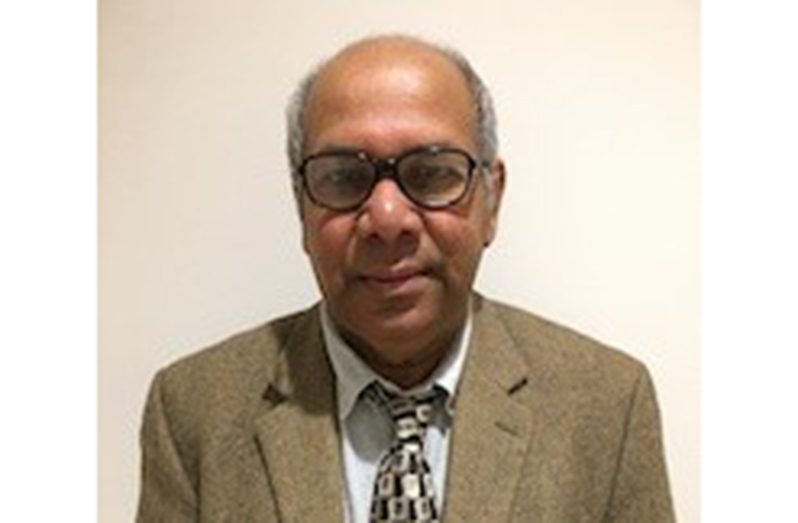ONE is struck by two fundamental factors when reading the historiography of East Indians (hereafter Indians) in British Guiana between 1850 and 1950. First, the field has received enormous attention, notably, in recruitment, transportation, plantation experience, and post-indenture adjustment and accommodation of Indians.
The narrative of the aforesaid themes has revealed the struggle and transformation of Indians from a sojourn to settlers in Guyana’s geographical, political, and cultural landscape, which arguably, deserves a canonical space in the country’s academic domain. The second is the paucity of biographical studies on Indians.
Except for Clem Seecharan’s study on Bechu, a radical indentured labourer, and a few other studies like that on Cheddi Jagan, there appear to be limited substantive studies on the biography of Indians emerging from the eighty years of indentured servitude. This is rather unfortunate.
The omission or even the neglect of biographical studies generally alienates individual experiences from the larger historical legacy, downplays individual motivations and desires, sidelines meaningful individual relationships, and promotes a false logic of homogeneity. It is within this context that political scientist Baytoram Ramharack’s book, Jung Bahadur Singh of Guyana (1886-1956): politician, ship doctor, labour leader and protector of Indians, radiates with brilliance, filling one vital missing gap of biographical analysis in the historiography of Indians in Guyana.
The thesis of the book is that JB Singh played a significant role in shaping British Guianese Indian society in the first five decades of the twentieth century. Yet, he has remained an obscure figure in Guyanese Indian historiography, often overshadowed by the better-known political leader, Cheddi Jagan. JB Singh was born in 1886 during indentured servitude but rose from that humble background to be a key player in British Guiana.
He was a member of the colonial legislature, a medical doctor, a labour rights advocate, and a family man. JB Singh emerged when Indians were making a transition from indentured servitude to independent survival by combining as well as juxtaposing their ancestral customs with those of their new homeland of British Guiana. Indians were thinking about whether to stay in British Guiana or return to India. The Indians who stayed began to achieve some success in business and agriculture, but they were reeling from lack of rights, inadequate political representation, poor health care, and limited exposure to basic education. JB Singh took up the mantle of leadership for Indians in those areas without renouncing his Indian identity. JB Singh believed that it was his Hindu Dharma, sacred duty, to serve his community through the British Guiana East Indian Association (B.G.E.I.A).
Ramharack informs that despite JB Singh’s success and popularity in the Indian community, he faced continuous challenges in the latter part of his life from the 1940s and early 1950s until he died in 1956. His main nemesis was Cheddi Jagan, a descendant of Indian indentured labourers and a medical doctor as well as someone who was clamouring and competing for the ideological leadership among Indians in British Guiana. Singh and Jagan “shared an ideological perspective and a political vision,” says Ramharack who argues, “that were located on the opposite ends of the political spectrum, very far apart and very difficult, given their personal and ideological persuasions” (p. 239).
Singh was a gradualist, believing that changes in British Guiana should take evolutionary steps with the elites at the helm, while Jagan was a Marxist revolutionary who wanted radical changes based on a bottom-up approach favoring the working-class. With Singh’s electoral loss in 1953, his passing in 1956, and the abandonment of the B.G.E.I.A, Jagan captivated the Indian masses with his charisma and revolutionary Marxist ideology. JB Singh’s legacy, however, lives on as an Indian nationalist who laid the groundwork for the social, political, and economic advancement of Indians emerging from the dehumanising and authoritarian structure of plantation indenture. Ramharack advises that leaders in search of an action plan and a path towards a future that guarantees ethnic security and reconciliation might want to examine the leadership dynamics following the abolition of indentureship in 1920 with JB Singh at the core. Ramharack’s rich, eye-opening account demonstrates that JB Singh belongs in the pantheon of great Guyanese and Caribbean activists and leaders.
The study has unraveled the complexities and multifaceted contexts so associated with the post-indenture period amid tension, retention, assimilation, and merging of identities in a conflict-habituated plantation society where race, class, and identity matter. JB Singh was in the midst of these dynamics, not as a bystander, but as someone who was actively involved in the restructuring, reordering, and reorganising of British Guianese society. One must commend and congratulate Baytoram Ramharack for this scholarship (lomarsh.roopnarine@jsums.edu).



.jpg)









